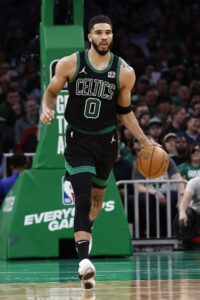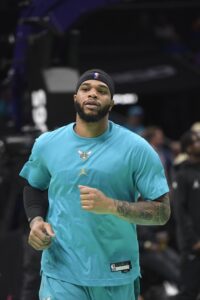The Wizards were one of the busiest teams of the offseason, bringing in first-round draftees in Alex Sarr, Carlton “Bub” Carrington and Kyshawn George. They also signed Jonas Valanciunas and Saddiq Bey in free agency while making other roster moves around the margins.
Last season marked the worst in Washington franchise history, with the team registering a .183 win percentage that was about four percentage points worse than their previous low in the 1961/62 season. While the Wizards didn’t become overnight contenders, the general sentiment is they did well to continue infusing young talent and serviceable veterans.
Sarr had a bit of a tough Summer League, but he was neck-and-neck with No. 1 pick Zaccharie Risacher in the eyes of most talent evaluators for best prospect in the draft. In my view, Washington did well to surround him with veterans with differing skill sets who can help him as he rises through the ranks. Carrington enters the league as one of the youngest and most explosive guards and should have a runway to minutes relatively early in his career. George similarly has an interesting upside and brings both ACC experience (Miami) and international expertise (Switzerland).
Bey was a free agent move that fell under the radar but should help the team massively. Bey’s efficiency fell off a bit this past season but he shot 36.1% on three-pointers on 6.5 attempts in the first three years of his career. Once he recovers from his ACL surgery, should help a Wizards team that ranked 25th in three-point efficiency last season improve in that regard.
Another major area to watch out for is how Washington’s young players continue to grow alongside one another. Corey Kispert is 25 now but has steadily improved over the course of his three-year career. Meanwhile, Bilal Coulibaly showed immense promise last season and should only continue to improve as a scorer and defender. His upside and development are key to this current build becoming competitive.
Jordan Poole had a tough start to last season but he quietly averaged 21.0 points while making 36.4% of 8.9 three-point attempts per night in his last 24 games of the season. Maybe he and Kyle Kuzma (22.2 PPG on .463/.336/.775 shooting) don’t build on those numbers, but they could both be used to help supplement this young team. For what it’s worth, Kuzma has seemed to enjoy being a focal point in Washington.
The Wizards aren’t done making moves this offseason. They have 17 players signed to standard contracts and are one of the only teams who have to deal with that sort of roster crunch. While the club may just end up cutting both Eugene Omoruyi and Jared Butler, the team’s only two non-guaranteed salaries, we explained in July why it might not be that simple.
The Wizards seem to like Omoruyi, and Butler played well last season while also fitting a positional need at point guard. They could just cut other players on small standard deals, but it’s hard to pinpoint who exactly would be on the chopping block. The team re-signed Anthony Gill to a third contract with the team and clearly values him. Patrick Baldwin could be another option, but he’s still young and may have untapped upside. Washington could also address its roster crunch on the trade market — perhaps the team gives Johnny Davis a change of scenery.
Regardless of what other moves the Wizards make for the rest of the offseason, their young core is undeniably in a better place than where it was last season.
That brings us to our question of the day. How do you evaluate the Wizards’ offseason? Are you intrigued by their young players? What moves should they make to trim the roster? What’s next?
Take to the comments to let us know what you think. We look forward to reading your input.
 [RELATED:
[RELATED: 
 The Hornets’ 2024 lottery pick doesn’t come without risk either, albeit for entirely different reasons —
The Hornets’ 2024 lottery pick doesn’t come without risk either, albeit for entirely different reasons —